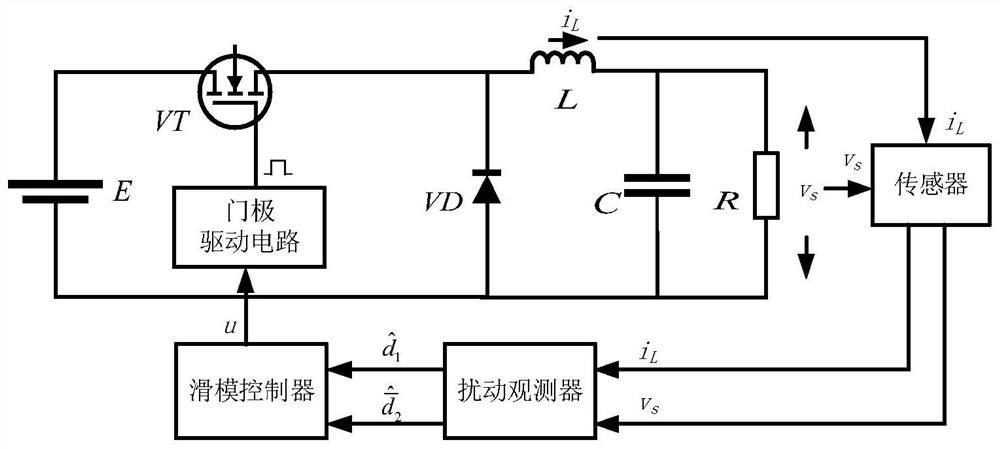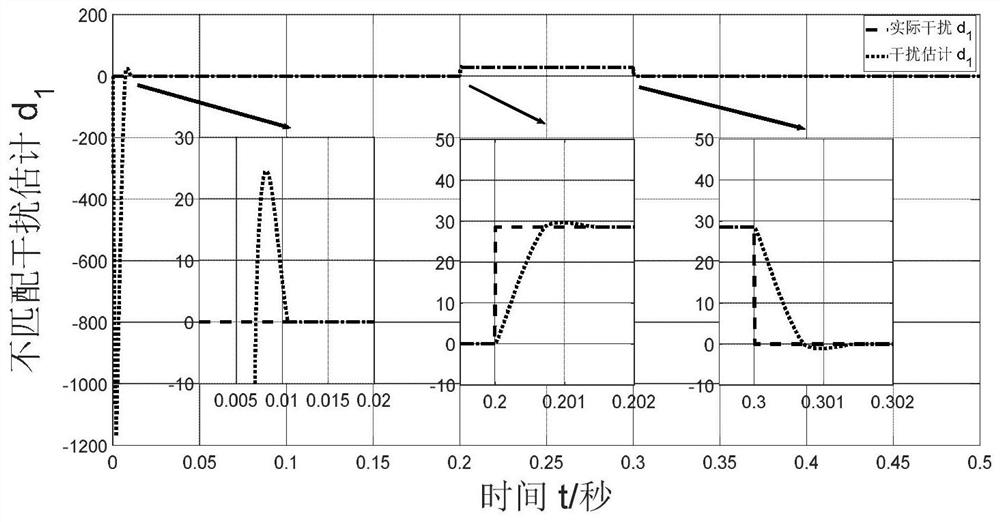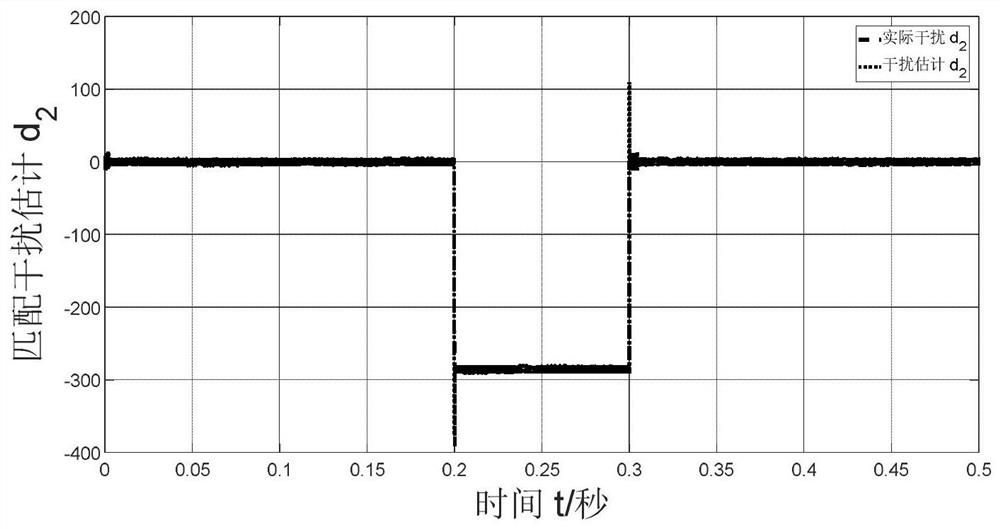Direct current buck converter system control method based on composite integral sliding mode control
A technology of DC step-down and integral sliding mode, which is applied in the direction of control/regulation system, DC power input conversion to DC power output, output power conversion device, etc. It can solve the problem that the expansion state observer cannot achieve limited time convergence and influence Problems such as actual system performance and mismatch interference can be achieved to improve dynamic response speed and anti-interference ability, improve steady-state accuracy and anti-interference ability, and improve dynamic response speed
- Summary
- Abstract
- Description
- Claims
- Application Information
AI Technical Summary
Problems solved by technology
Method used
Image
Examples
Embodiment Construction
[0043] Embodiments of the invention are described in detail below, examples of which are illustrated in the accompanying drawings. The embodiments described below by referring to the figures are exemplary only for explaining the present invention and should not be construed as limiting the present invention.
[0044] A control method for a DC step-down converter system based on compound integral sliding mode control, the specific steps are as follows:
[0045] Step 1, take the capacitance voltage v of the DC step-down converter as s , inductor current i L is the state quantity, the state space average model of the disturbed DC buck converter is gradually established by using the state space average method.
[0046] In step 2, a finite-time disturbance observer is designed for the disturbed state-space average model of the converter obtained in step 1 to accurately estimate the disturbance caused by load changes and input voltage fluctuations. Since the load interference has...
PUM
 Login to View More
Login to View More Abstract
Description
Claims
Application Information
 Login to View More
Login to View More - R&D
- Intellectual Property
- Life Sciences
- Materials
- Tech Scout
- Unparalleled Data Quality
- Higher Quality Content
- 60% Fewer Hallucinations
Browse by: Latest US Patents, China's latest patents, Technical Efficacy Thesaurus, Application Domain, Technology Topic, Popular Technical Reports.
© 2025 PatSnap. All rights reserved.Legal|Privacy policy|Modern Slavery Act Transparency Statement|Sitemap|About US| Contact US: help@patsnap.com



